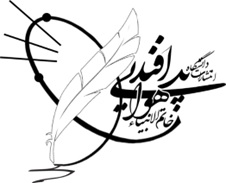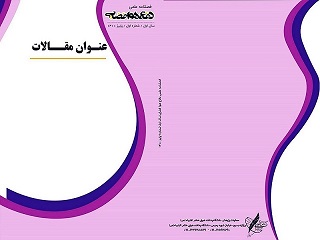نویسندگان
1 استادیار برق، دانشکده مهندسی برق، دانشگاه پدافند هوایی خاتمالانبیاء(ص)، تهران، ایران
2 دکترای برق، دانشکده مهندسی برق، دانشگاه پدافند هوایی خاتمالانبیاء(ص)، تهران، ایران
3 دانشجوی دکترای برق، دانشکده مهندسی برق، دانشگاه پدافند هوایی خاتمالانبیاء(ص)، تهران، ایران
چکیده
امروزه در سیستمهای ردیاب مبتنی بر تصویر، جهت شناسایی و تعقیب اهداف نظامی بهطور گستردهای از تکنیکهای تطبیق الگو استفاده میشود. سیستمهای فوق به دلیل پسیو بودن، در برابر تکنیکهای جنگ الکترونیک رایج مقاوم هستند. یکی از مشکلات استفاده از الگوریتمهای تطبیق الگو، کند بودن آنها بخصوص در مواقع بروز چرخش و تغییر مقیاس در اهداف نسبت به الگوی از قبل تعیینشده میباشد. در این مقاله الگوریتمی بهینهشده جهت انجام تطبیق الگو مبتنی بر ضرایب کرولیشن، تغییرناپذیر به مقیاس و زاویه در تصاویر مقیاس خاکستری بیان شده است. الگوریتم brute force تطبیق الگو بین الگوی Q)) و تصویر(A) را از طریق ایجاد حالتهای مختلف الگو در مقیاس و زاویههای مشخص انجام میدهد. این الگوریتم بیشازحد طولانی و زمانبر بوده، جنبه عملی ندارد. الگوریتم بهینهشده شامل 3 فیلتر متوالی مقیاس، زاویه و تطبیق الگو میباشد. که در آنها به ترتیب احتمال مقیاس، زاویه چرخیده شده برای هر پیکسل و درنهایت نقطه تطبیق الگو به دست میآید. این الگوریتم برخلاف brute force شتاب قابلتوجهی به جستجو داده و نزدیک به400 بار سریعتر از آن عمل میکند. با پیادهسازی سختافزاری بر روی FPGA میتوان عملیات شناسایی و تعقیب اهداف نظامی را با سرعت 10 فریم در ثانیه انجام داد.
کلیدواژهها
عنوان مقاله [English]
Use of Correlation Coefficients to Provide an Optimal Algorithm of Template Matching, Invariant to Scale and Angle with Implementation on FPGA
چکیده [English]
Template matching techniques are widely used today in image-based tracking systems to identify and track military targets. Due to their passivity, these systems are resistant to common electronic warfare techniques. One of the problems with using template matching algorithms is that they are slow, especially when rotation and scaling occur in targets relative to a predetermined pattern. In this paper, we perform an optimized algorithm for grayscale template-matching based on correlation coefficients which is invariant to scale and angle. The ‘brute force’ algorithm performs template-matching between the image to analyze and the template query shape rotated by specific angle, translated to specific scale. This takes too long and thus is no practical. The optimized algorithm includes three cascaded filters for scale, angle and template matching which results in probability of scaling, rotated angle for each pixel and point of template-matching, respectively. This algorithm accelerates searching and is 400 times faster than ‘Brute Force’ algorithm. By implementing hardware on the FPGA, it is possible to identify and track military targets at a speed of 10 frames per second.
کلیدواژهها [English]
- Template Matching
- Invariant to Scale and Angle
- Tracing
- Correlation Coefficients

